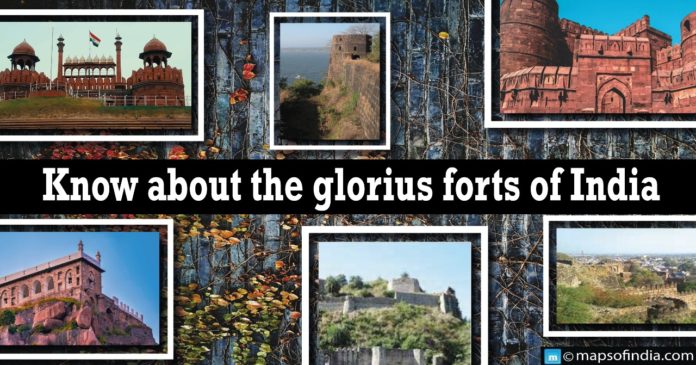Forts are symbols of Indian historical treasures. India was once a group of numerous empires where kings and emperors ruled over many parts of the country as their capitals. Enemy fortifications were built in this order. At the same time, some of them were destroyed during enemy attacks.
Still, some forts across the country remain intact as living testimonies of history.
Below-listed is some of the notable forts:
- Red Fort
The Red Fort in the national capital, Delhi, has a rich history. The Mughal Emperor Shah Jahan built it in the 17th century. Shah Jahan wanted to shift the capital of the Mughal Empire from Agra to Delhi. To this extent, he wanted to build a fort in Delhi. The foundation stone for the defence was laid on May 12, 1639. The Red Fort was designed by Ahmed Lahor, who created the Taj Mahal. The fusion of Islamic, Mughal, Parsi, and Hindu cultures is evident in this structure. Inside the fort are the Diwan-i-Aam Durbar, the Moti Masjid, the Diwan-i-Khas Mandapam built of marble, and a museum named Mumtaz Mahal. The Red Fort is one of the leading tourist destinations in India. Chandni Chowk Market near the Red Fort was built by Jahanara, the daughter of Emperor Shah Jahan. On Independence Day, the Prime Minister unveils the national flag over the Red Fort every year.
- Golconda Fort
The fort of these Nawabs is located on the outskirts of Hyderabad, the capital of Telangana state. Kakatiyas initially ruled the Golconda region. At that time, there was a mud fort. Over time the area was captured by the Bahmani Sultan Muhammad Shah. Along with the Bahmani emperors, the Golconda region became the capital of the Qutb Shahis between 1512–1687. The Golconda Fort was built by the Qutb Shahi dynasty on a 120 meter high black stone hill as the kings needed a fort in the capital. The fort, along with its towers, covers an area of about 5 km. In it is the dungeon where Lord Tanisha imprisoned Ramadaasu.
- Kangda Fort
The fort is located in the hilly region of Kangda, about 20 km from Dharamshala in Himachal Pradesh. The Rajputs built it during their peek rule. However, in 1615, Emperor Akbar failed to capture it. Historians claim that Akbar’s army saved the Rajputs from invading fortifications. Many kings and Englishmen, including the Rajputs, lived in the fort and ruled the kingdom. However, the regiment was partially destroyed in the 1905 earthquake. Though, it still attracts tourists.
- Agra Fort
Agra is reminiscent of the Taj Mahal. But, there is another beautiful visitor area right there—the same Agra Fort. The fort was inhabited during the reign of four generations of Mughal emperors as the capital of Agra. However, several studies suggest that it was built by the Lodi emperors earlier and modernized by the Mughals. The fort is the first Indian building inscribed on the UNESCO World Heritage List (1983).
- Jhansi Fort
Everyone read about Jhansi Rani Lakshmibai in a textbook as a child. She ruled the Jhansi region of Uttar Pradesh from Jhansi Fort. Historians say that the fort was built in 1613 by Veersingh Dev, a Rajput of Bundela. Bundelkhand, the defence, is made in the Marathi style. At the fort, entrances are the Shiva Temple and the Ganapati Temple. The Jhansi Festival is held annually in January and February. The defence was even more beautiful, and Mustabai impressed the tourists immensely.
- Jaigad Fort
Raja Jai Singh II built the fort in 1726 to protect the Amer Fort in Jaipur, the capital of Rajasthan. Hence the name Jaigadh Fort after him. Due to its proximity to Delhi, the fort was converted into an armoury by the Mughal Emperor Shah Jahan. The present museum houses a portrait of the kings of Jaipur, details of the fort structure and objects. From this fort, the beauty of the Amer Fort and the Aravalli Mountains enchant the tourists.




